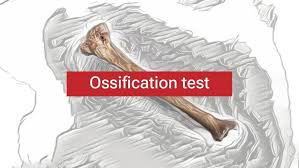Ossification Test:

One of the individuals accused in the murder case of a political leader underwent an ossification test to determine if he was a minor.
- Ossification is the natural process of bone formation, beginning in the early developmental stage of the fetus and continuing until late adolescence, with variations among individuals.
- A person’s approximate age can be estimated based on the stage of development of their bones.
- The test involves taking X-rays of specific bones, such as those in the hands and wrists, to assess skeletal and biological development.
- The X-ray images can be compared to standard development benchmarks to help determine age.
- The analysis may also utilise a scoring system that evaluates individual bones in the hands and wrists, comparing their growth to established maturation standards within a specific population.
- Variability in observing bone maturation can affect the accuracy of ossification tests.
- Minor developmental differences among individuals create potential for error in age estimation.
- Ossification tests typically provide an age range, such as 17-19 years.
- Courts have addressed the issue of margin of error within this range, debating whether to accept the lower or upper end of the range.
- For example, In 2024, the Delhi High Court ruled that in cases under the POCSO (Protection of Children from Sexual Offences) Act, 2012 the upper age limit of the ossification test’s reference range should be considered.
- The court also stated that a margin of error of two years should be applied when determining age.




